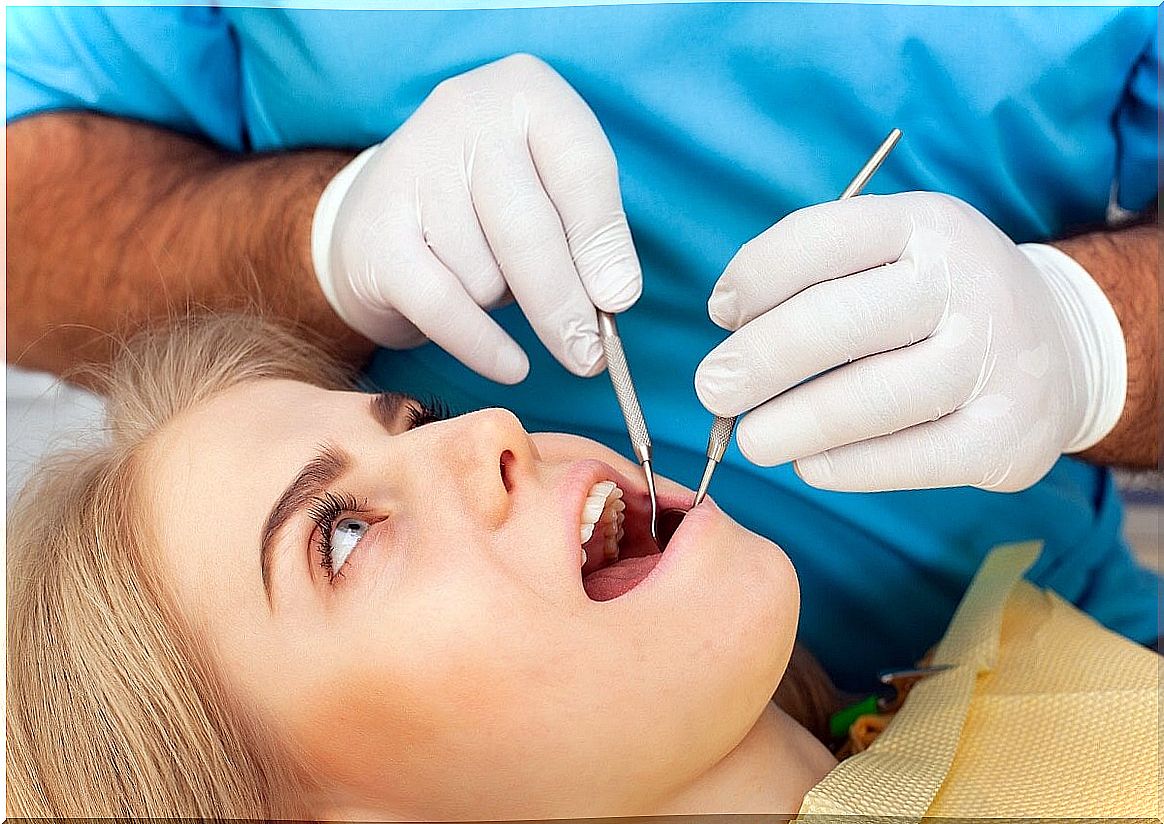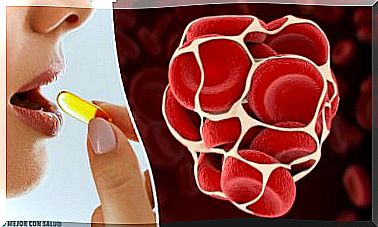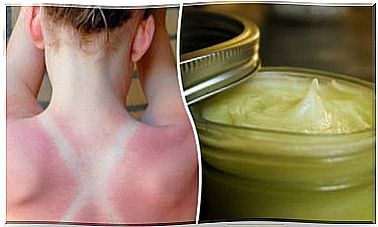What Is Dry Socket And What Causes It?
Dry socket is the most common postoperative complication after the extraction of a permanent tooth. In this clinical picture there is an inflammation of the alveolar bone, the part of the maxillary bone apparatus that forms and supports the dental alveoli. This is due to poor wound healing after the surgical process.
Dry socket occurs in 1 to 5% of patients who have undergone tooth extraction, especially when it comes to third molars (up to 38% of cases). In any case, there are reports that estimate a much higher epidemiology with an incidence of up to 70% of patients.
This pathology has a multifactorial cause and, therefore, it can be approached in different ways. If you want to know everything about dry socket and its peculiarities, we encourage you to continue reading.
What is dry socket?
Some authors define this process as infectious , while others classify it as inflammatory in nature. In any case, the etiology is common: after the dental extraction surgical process, the alveolar bone is exposed, since it has not been covered by the blood clot and the expected healing tissue.
The patient is unable to prevent food particles or the tongue from coming into contact with exposed bone, resulting in sharp localized pain. The mechanical stress caused by chewing and the bacteria in the mouth can make healing even more difficult, since they break up the blood clot that should cover the area.
Furthermore, it should be noted that the food particles in the cavity of the extracted tooth can become fermented by the action of oral bacteria. As a consequence, toxins and antigens are formed that cause local inflammation and halitosis. However, dry socket is not usually associated with a bacterial infection.
In addition, the Spanish Journal of Oral and Maxillofacial Surgery distinguishes 2 variants within the pathology:
- Primary dry socket: it is a periostitis, that is, inflammation of the periosteum. This is the fibrous sheath that serves to anchor the tooth to the socket. It is immediate and patients do not bleed after tooth extraction.
- Secondary dry socket: occurs 2 to 4 days after extraction. The healing clot is completely lost, and the patient experiences pain, halitosis, and even mild swelling of the lymph nodes.

What causes this pathology?
We went to the Journal of Clinical and Diagnostic Research, because there are collected, in its files, various studies that explore the possible causative agents of dry socket. We present some of them in the following lines.
1. Place of extraction
Dry alveolitis occurs more in the lower jaw, since less blood reaches this area and the formation of the clot is more difficult. In addition, it is more common when molars and premolars are extracted.
As we have said, the third molars are the ones that present the most problems. 38% of the extractions of these teeth end in dry socket. This is common when wisdom teeth that have failed to grow well are removed.
2. Complications during the operation
The more structures the tooth extraction damages, the more likely it is for a dry socket to appear. When too much force is applied to the tooth when it is extracted, it seems that friction is created between the bone and the soft tissue. This would result in the rupture of neighboring blood capillaries, which would hinder the healing process.
3. Smoking
It is estimated that up to 12% of smokers develop this pathology after tooth extraction, while the general incidence is 4%.
The chemicals and toxins in cigarette smoke prevent blood clot formation and delay healing. Nicotine has a vasoconstrictive action.
4. Infections
When the patient has gingivitis or periodontitis, the chances of developing dry socket are increased. Periodontitis can bring many more threats to the patient, since it is a serious infection that damages soft tissue and teeth irreparably.
5. Use of contraceptives and menstrual cycle
Although it seems surprising, the menstrual cycle of the woman could have some weight when it comes to explaining this condition. Without going any further, it has been shown that the frequency of dry socket is higher in the middle of the cycle than during the menstrual period. Also, it appears that women who use contraceptives are at higher risk.
Risk factors for dry socket
We have described the possible causes of dry socket and, with it, some of the risk factors. In any case, the Mayo Clinic and other sources allow us to unify all those factors that can lead to its appearance in the following list:
- That the dental extraction occurs in the wisdom teeth: Wisdom teeth are large and tend to grow poorly. For this reason, the extraction of these structures is more cumbersome and leaves large cavities exposed.
- Smoking: smokers are 3 times more likely than non-smokers to develop dry socket.
- Take oral contraceptives: the high levels of estrogens in these drugs can disrupt some normal healing processes. In this case, it is the clot and the scar tissue in the tooth space does not form properly.
- Previous Infections: Infections in the mouth weaken hard and soft tissues. Therefore, it is more difficult for them to heal after surgical trauma.
- Poor oral hygiene: poor oral hygiene can lead to the accumulation of pieces of food and bacterial films in the area of the injury. This makes the healing process difficult.
- Older age: an elderly patient heals worse.
What are the symptoms?
The patient feels a lot of localized pain in the affected area. This can limit the functions of the oral cavity, as the discomfort becomes more prevalent with mechanical actions as typical as cutting up a food or sucking a liquid. Also, the pain can spread to the temple, ear, and neck on the affected facial side.
These are subjective symptoms, but the clinical signs that allow the diagnosis are very obvious. The dental socket is emptied after the extraction, as the clot that should fill the place left by the tooth is not organized.

Treatment of dry socket
As studies indicate, some medical professionals do not agree to talk about treatments for dry socket, as its causes are not yet fully known. As no specific agent is detected, the most widespread possible approach is based on pain relief.
However , research published on the KAOMS medical portal includes slightly more sophisticated approaches. As this clinical entity indicates, a correct treatment includes the irrigation of chlorhexidine gluconate in the dental space in order to eliminate excess food and bacteria accumulated in the alveolus.
After this, the empty socket is covered with various medications, which should generate a resorbable but durable surface that allows the tissue to heal without the mechanical stress of chewing and suction. They are usually in gel or paste form, although specialized bandages are sometimes used.
Can it be prevented?
The best prevention to avoid dry socket is to maintain proper oral hygiene before and after extractions. This is achieved with mouthwashes, avoiding smoking and following the medical professional’s recommendations to the letter.
In any case, sometimes it is inevitable that this process appears, either by the morphology of the extracted teeth, by the consumption of contraceptives or by many other events that cannot be controlled. In this case, going to the dentist promptly becomes essential.









